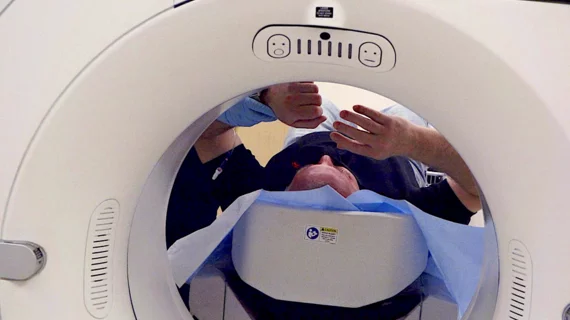Increased use of CCTA improves CAD outcomes without raising costs
Using coronary CT angiography (CCTA) to evaluate coronary artery disease (CAD) is associated with lower hospitalization and mortality rates, according to new findings published in JACC: Cardiovascular Imaging.[1] In addition, researchers noted, CCTA provided additional value by providing clinicians with a cost-neutral cardiac imaging option.
In 2016, the United Kingdom’s National Institute for Health and Care Excellence (NICE) issued a guidance recommending CCTA as a first-line test for suspected angina. With this decision in mind, study’s authors explored data from nearly 2 million patients treated in the United Kingdom for suspected CAD from 2012 to 2018.
Overall, CCTA use increased significantly as a result of the NICE recommendation. This shift was linked to a reduction in cardiovascular mortality, ischemic heart disease mortality and myocardial infarction-related hospitalizations; there was also an “apparent trend” toward reduced all-cause mortality.
In addition, researchers found that using CCTA as recommended by the NICE guidance—even though it resulted in more imaging examinations being performed—was not associated with increased costs over the course of the study
“These real-world findings in a very large patient cohort provide strong evidence that the use of CCTA as a first-line investigation in those with suspected CAD reduces cardiovascular mortality and proves the use of CCTA as the first-line test—as proposed in the U.K. NICE guidance—is highly cost-effective,” co-author Edward Nicol, MD, MBA, president-elect of the Society of Cardiovascular Computed Tomography, said in a prepared statement.
Nicol also provided additional context on how CCTA was able to increase without costs increasing significantly.
“This cost neutrality was driven by a reduction in more expensive investigations, such as invasive coronary angiography, with a replacement with less expensive CCTA,” he said.
The full JACC: Cardiovascular Imaging study is available here.
Additional context on CCTA
CCTA has also received a substantial amount of attention in the United States in recent years, particularly the potential of adding advanced artificial intelligence (AI)] algorithms to CCTA to improve its effectiveness. This technology, designed by HeartFlow, was described as a “reasonable” and “effective” treatment option for diagnosing CAD in the 2021 chest pain guidelines developed by the American Heart Association and American College of Cardiology. A recent analysis of this technique found that AI-powered CCTA provided significant value when evaluating patients with stable chest pain and suspected CAD.
U.S. advocates for CCTA said the new chest pain guidelines bumping CCTA up to a 1A front line recommendation will likely have the same impact as the NICE guidelines. There is wide expectation that cardiac CT will see significant growth in the next few years.

